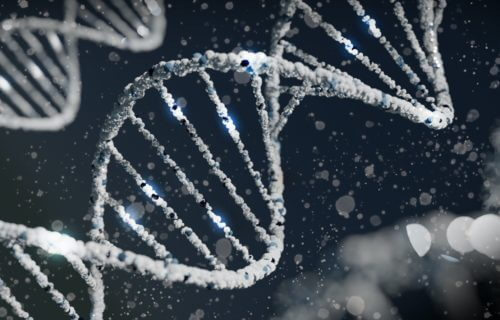💡What To Know:
- Scientists connected longer genes to more vulnerability to aging.
- Genes are made up of DNA, building blocks from the mother and father.
- Estimates show that each person has between 20,000 and 25,000 genes.
CHICAGO — Scientists have finally discovered what causes our bodies to age. Researchers from Northwestern Medicine revealed that the length of our genes may be at the heart of the aging process, with longer genes connected to life-shortening neurodegenerative diseases like Alzheimer’s.
The collective findings of these four studies, published in the journal Trends in Genetics, represent the first time research has pinpointed gene length as a central factor in the myriad aspects of biological aging.
“Long genes that become less active with age may be the central cause of aging in our bodies,” says study co-corresponding author Thomas Stoeger, an assistant professor of medicine in pulmonary and critical care at Northwestern University Feinberg School of Medicine and a member of the Potocsnak Longevity Institute, in a media release. “Our finding advances the field by identifying a single phenomenon that connects most existing knowledge about aging and makes this underlying phenomenon measurable.”
This research suggests that conditions known to accelerate aging, such as smoking, alcohol consumption, oxidative stress, and UV irradiation, decrease the activity of long genes. Conversely, factors that are believed to slow down the aging process, like caloric restriction, have been found to increase the activity of these genes. The extremes of gene length, both very short and very long, are associated with cellular processes that change with aging, including energy formation, protein synthesis, and neural signal transmission.

What makes this discovery compelling is its broad applicability across different species and conditions. The research utilized molecular data from humans, mice, rats, killifish, and other organisms, along with experiments in mice, to establish that the phenomenon of gene length influencing aging is widespread. Previous scientific endeavors have often focused on identifying specific genes responsible for aging. In contrast, these studies suggest that the physical length of genes, rather than their specific functions, plays a crucial role in the aging process.
One analogy offered by scientists compares gene length to the likelihood of encountering problems on a long road trip — the longer the journey, the higher the chance of issues arising. This example helps explain why certain cell types, especially those relying on longer genes, may be more vulnerable to the effects of aging due to accumulated DNA damage. This damage prevents cells from properly reading and activating the information contained within the genes.
The implications of these findings extend beyond general aging to offer new insights into neurodegenerative diseases such as Alzheimer’s.
“The regulation of genes is one of the most central processes of life, and our four studies explain why the activity of long genes in particular change in aging,” explains Stoeger. “In addition to aging, we show that the same finding occurs in patients with Alzheimer’s disease, an age-associated disease. Our findings help us rethink causes of neurodegenerative diseases such as Alzheimer’s disease. Because genes with neural function are unusually long, we hypothesize that the decreased activity of long genes cells fails to produce sufficient biomaterials to properly maintain neural function.”
This hypothesis is relevant to neural cells, which are known to depend on very long genes and are more susceptible to damage due to their slow or non-dividing nature.
The research also suggests a potential explanation for why pediatric cancer patients who undergo DNA-damaging chemotherapy treatments may experience premature aging, including neurodegeneration, later in life. By connecting the dots between gene length, aging, and disease, these studies pave the way for developing new interventions and treatments aimed at enhancing longevity and preventing age-associated diseases.
StudyFinds’ Matt Higgins contributed to this report.
